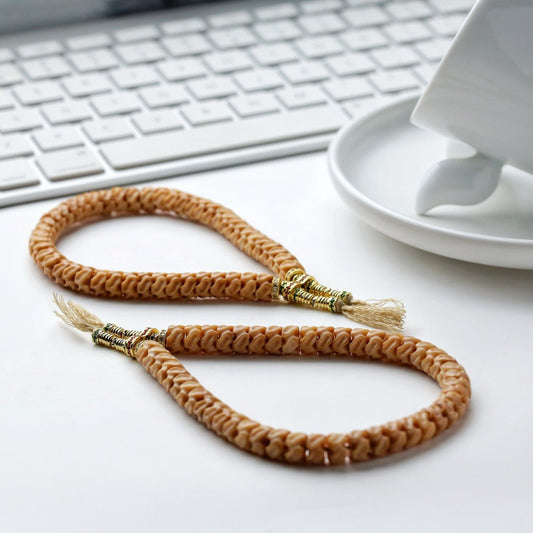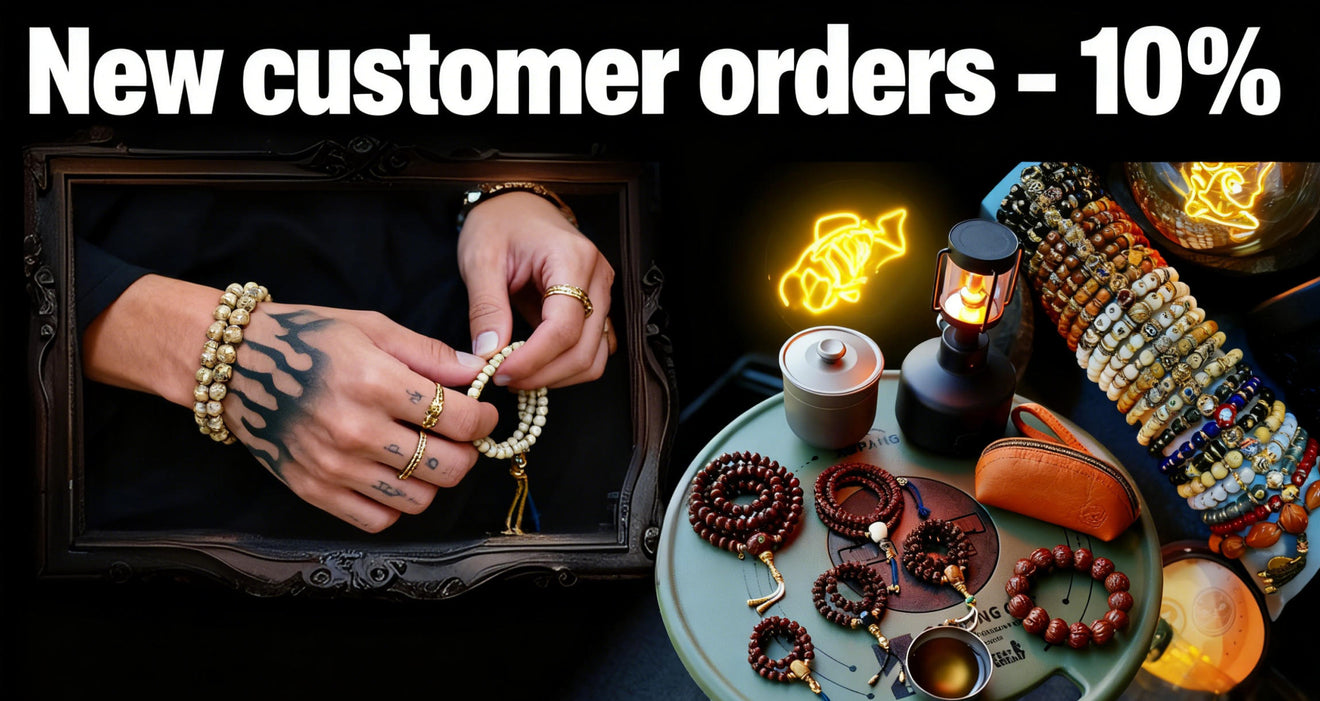specially structured handmade bracelets with mystical appeal?

Amidst the complex pattern among Tibetan spiritual traditions lie two compelling artifacts: the traditional thangka and bodhi prayer bead. Each, uniquely expressed, facilitates linkages to metaphysical clarity. The thangka, an intricate scroll, illustrates divine figures, symbolic diagrams, or Buddhist narratives, serving as a contemplative tool.
By comparison, the bodhi bead, often crafted from unique minerals, hardwood, fruit stones, or osseous tissue, is a tangible reminder of Buddha's nirvana under the bodhi tree. Handling the beads deepens focused awareness.
- Jointly, the thangka and the bodhi bead express the interconnectedness of art and spirituality. They offer a tangible link to the timeless doctrines of Tibetan Buddhism.
Stories Told by Camel Skeletons
Within historic timelines, age-old treasures whisper tales about a world long vanished. These are not luxurious objects produced by forgotten empires, but humble camel bones carved with inscriptions that harbor the riddles of a bygone cycle. Each segment embodies the echo emanating from a life lived, a journey completed, and a connection to the sacred wisdom which encompasses us all.
- Those
- Gifts
- Symbolize
Revealing the Hidden Language of Thangka Paintings
Tangkas are vibrant paintings on canvas, meticulously crafted by Tibetan artists to depict spiritual figures and scenes from Buddhist scriptures. Each detail within a thangka is laden with relevance, forming a complex tapestry of visual narratives that guide the viewer on a introspective journey. The chromatics used in thangkas are not merely aesthetic choices but carry deeper connotations, standing for different aspects of the Buddhist beliefs. From the serene figures to the intricate layouts, thangkas offer a look into the rich world of Tibetan Buddhism, inviting us to deliberate upon its teachings.
- Authentic thangka art often depicts key Buddhist figures such as Buddha Shakyamuni, Bodhisattvas like Avalokiteshvara and Manjushri, and enlightened beings from various traditions of Tibetan Buddhism.
- Through these representations lies a wealth of expertise that can be unlocked by those who examine the symbolic language of thangkas.
Siddhartha's Path to Enlightenment: Embodied in Beads and Bone
Upon the winding track to awakening, the Buddha exercised tokens imbued with profound influence. Every bead and piece held within them the quintessence of his transcendent vision, presenting glimpses into the form of reality. Alongside their profile, the Buddha articulated profound insights that surpass the realm of mundane perception.
From the sacred beads, crafted from unique materials, spread vibrations that echoed with the vibrant currents within. The substance of a entity, meticulously transformed into charms, served as tangible guides of the impermanence constitutional to all realities.
Thangkas: Windows into Himalayan Spirituality
Thangkas radiant paintings on cloth serve as powerful representations of Himalayan spirituality. These intricate works of art, meticulously created with artful brushstrokes, depict a vast array consisting of Buddhist deities, mandalas, and scenes from holy scriptures. Each thangka is an invaluable tool for meditation and contemplation, offering discernment into the intricate teachings of Buddhism.
- They are often used in ritual ceremonies and
- reflecting states of spiritual illumination.
- Thangkas present not merely decorative creations but rather gateways into the rich and compelling world of Himalayan spiritual traditions.
The Spiritual Significance of Bodhi Beads in Mindfulness and Compassion
Each sphere on a bodhi bead mala whispers tales of ancient wisdom, guiding us on a expedition through the tranquil waters of mindfulness. As we carry these intricately fashioned beads, our fingers trace the contours of separate one, anchoring our alertness in the present moment. The gentle feel of the beads against our palms serves as a tangible reminder to exhale, fostering a sense of stillness.
- With every bead that passes between our fingers, we develop compassion, extending it first to ourselves and then outward to the world.
- Sacred teachings teaches us that mindfulness is a ability that requires patience and commitment.
Via the rhythmic repetition of mantra or simply the mindful enumerating of the beads, we emancipate from the relentless chatter of the mind.
The practice applying bodhi beads is a beautiful invitation to re-engage our connection with ourselves and the world around us.
Harnessing the Energy: Weaving a Camel Bone Bracelet for Spiritual Expansion
Intention is a powerful force in our lives, shaping our experiences and guiding us towards our spiritual goals. When we combine this intention with the sacred energies of crafting a camel bone bracelet, we create a potent synergy that can amplify our spiritual growth.Camel bone carries profound symbolism, representing endurance. Its natural beauty and rustic charm serve as a constant reminder of the inherent power within each of us.In the process of handpicking each bone, embed spiritual goals. With every knot or link, we incorporate our hopes, dreams, and aspirations for spiritual evolution. This act of creation becomes a devotional ceremony, harmonizing us with our inner wisdom and guiding us on a pilgrimage of understanding.- Let the natural hues and textures of the bone guide your vision.
- Visualize your desires as you work, connecting them into the bracelet's structure.
- Keep it close as a symbol of your evolving journey.
The Fascinating Story of Camel Bone in Buddhism
In the rich tapestry inside Buddhist tradition, artifacts often hold profound symbolic meaning. Amidst these varied objects, camel bone stands out as a noteworthy and fascinating element. Within history, this material has been integrated in the crafting during various Buddhist relics, each imbued with specific connotations.
- Acknowledged as a symbol of resilience and strength due to the camel's ability to overcome in harsh environments, camel bone often represents spiritual fortitude.
- Additionally, the color and texture for camel bone are believed via some to hold auspicious connotations, indicating purity and serenity.
Hence, camel bone has become a prized part of Buddhist culture, serving as a tangible bridge to the profound teachings associated with this ancient faith.
Thangka Compositions: Acts of Holiness
Within the ethereal realm of Tibetan Buddhism, Thangka paintings emerge as sacred portals to enlightenment. These works, meticulously crafted by skilled artists known as thangkapa, depict a myriad of vibrant deities, celestial beings, and mythical creatures. Each brushstroke saturates profound spiritual significance, narrating ancient tales and philosophical doctrines.
- Displaying a vast compendium of Buddhist iconography, Thangkas serve as both devotional objects and instructional tools. Faithful practitioners gaze upon these paintings during rituals and meditations, seeking to cultivate spiritual wisdom.
- Beautifully adorned with intricate details embellished by diverse vibrant hues, Thangkas are considered windows into the divine. All painting acts as a symbolic representation of the Deity's teachings and the path to liberation.
Through their potent imagery and symbolism, Thangka paintings offer a glimpse into the rich doctrinal traditions of Tibet. They are a testament to the enduring beauty of Tibetan art and its profound ability to stimulate.
Embracing the Duality: Thangkas and the Cycle of Life and Death
Thangkas, radiant pictorial scrolls from Tibetan culture, embody a meaningful examination of life’s transience. Each intricate illustration depicts deities and beings engaged in the progressive venture of life and death, a panorama of birth, growth, impermanence, and reawakening. The artists skillfully weave Buddhist jewelry these concepts within the thangka's universe, highlighting the relation of all things. Through vivid illustrations, they invite us to meditate on our own being. The cycle circulates, a progression of coming and going, emphasizing the preciousness of each moment. By embracing this duality, thangkas teach us to appreciate the beauty in both life's joys and sorrows.Lines of Commitment: The Significance of Bracelets in Buddhist Practice
In the intricate tapestry of Buddhist practice, seemingly straightforward objects often hold profound meaning. Among these are bracelets, which serve as tangible indicators of devotion and commitment to the path of Buddha. Worn on the wrist, a bracelet functions as a constant reminder of one's aspirations and intentions. It can evoke the impermanence of life, motivating practitioners to remain focused in the present moment. Some bracelets may embrace sacred signs, such as mantras or the names of Buddhas, which are deemed to summon positive energy and security. Others tend to be made from elements with spiritual significance, like sandalwood or lotus seeds, increasing the bracelet's meaning. Ultimately, the significance of a Buddhist bracelet resides far beyond its physical form. It becomes a powerful tool for contemplation, a stimulus to live in harmony with the teachings of Buddha, and a embodiment of one's unwavering commitment.